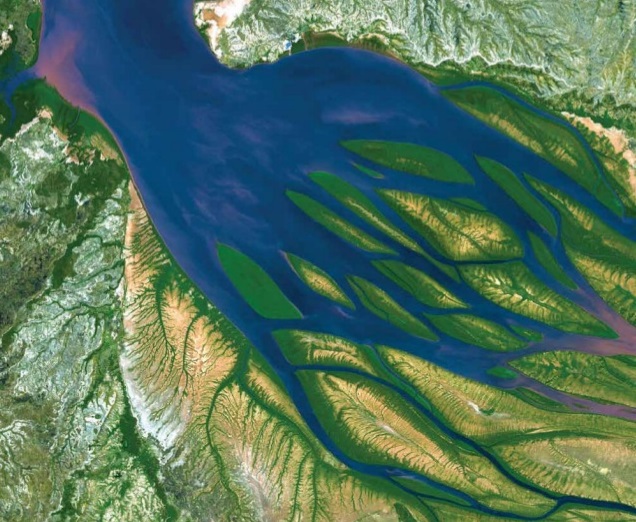
Nancy F. Glenn (Early Adopter)
Boise State University, Boise Center Aerospace Laboratory
Applied Research Topic:
Use of ICESat-2 data for improved terrestrial carbon estimates with semiarid ecosystem structure.
Potential Applications:
Long-term land management; Utilize estimates of aboveground biomass to quantify carbon, fuel loads, and monitor change in semiarid regions.
Abstract:
Drylands cover approximately 40% of Earth’s terrestrial surface, support nearly 35% of the globe’s population, and have the largest net change in population compared to other ecosystems (Millennium Ecosystem Assessment, MEA, 2005). Population growth, coupled with low levels of human well-being, food security, land degradation, and ecosystem service vulnerability in dryland ecosystems are major global concerns. Among dryland subtypes, semiarid areas are the most vulnerable to loss of ecosystem services (MEA, 2005). In the semiarid western US, the distribution of species and vegetation types are expected to shift in response to climate change and other stressors. Previous studies have documented the change in fire regimes and the increasing fire-invasive grass cycle occurring in the western U.S. The change in vegetation composition and structure due to stressors such as climate change, fire, and invasive species, alter the fuel load making these ecosystems vulnerable to high-severity fire. Quantifying the composition and structural variability of short-statured semiarid vegetation (e.g. shrublands, annual grasses) is necessary for long-term land management and understanding ecosystem vulnerability. The composition and structural variability of semiarid vegetation can be captured leveraging synergistic remote sensing data, such as from hyperspectral and laser altimetry systems. As early adopters of ICESat-2, our objective is to explore the potential of ICESat-2, either independently or with data fusion of hyperspectral and multispectral data, to quantify aboveground biomass of semiarid ecosystem vegetation. Our goal is to use estimates of biomass to quantify carbon, fuel loads, and monitor change in regions such as the Great Basin, western U.S.
SDT Member Partner:
Co-Investigator(s):
- Rupesh Shrestha, BCAL
- Lucas Spaete, BCAL
- Aihua Li, BCAL
- Jessica Mitchell, BCAL
End Users:
- USDA (US Forest Service and Agricultural Research Service, POC Dr. Stuart Hardegree)
- DOI (BLM, POC: Anne Halford; including the Great Basin Landscape Conservation Cooperative (LCC), and USGS, POC: Dr. Matt Germino)
- DoD (Charles BaunеКIdaho Army National Guard)
- Regional partners (Great Basin Research and Management Partnership and Joint Fire Sciences Program)
References:
- Glenn, N.F, Spaete, L., Sankey, T., Derryberry, D., Hardegree, S., Mitchell, J., 2011, Errors in LiDAR-derived shrub height and crown area on sloped terrain, Journal of Arid Environments, 75 (4), 377-382.
- Glenn, N.F. and Finley, C., 2010, Fire and vegetation type effects on soil hydrophobicity and infiltration in the sagebrush-steppe: I. Field analysis, Journal of Arid Environments, 74, 653-659, 10.1016/j.jaridenv.2009.11.009
- Gould, S., Glenn, N., Sankey, T., McNamara, J., Spaete, L., 2013, Influence of a dense, low-height shrub species on the accuracy of a LiDAR-derived DEM, PE&RS, 79, 5: 421-431.
- Li, A., Glenn, N.F., Scaling sagebrush aboveground biomass estimates from the stand to watershed levels using laser scanning, in prep.
- Mitchell, J., Glenn, N.F., Sankey, T., Derryberry, D.R., Anderson, M.O., Hruska, R., 2011, Small-footprint LiDAR estimations of sagebrush canopy characteristics. Photogrammetric Engineering & Remote Sensing, 77 (5), 521-530.
- Mundt, J., Streutker, D., Glenn, N., 2006. Mapping sagebrush distribution via fusion of hyperspectral and LiDAR classifications. Photogrammetric Engineering and Remote Sensing, 72 (1): 47-54.
- Olsoy, P., Glenn, N.F., Clark, P.E., Estimating Sagebrush Biomass Using Terrestrial Laser Scanning, Rangeland Ecology & Management, in review.
- Olsoy, P., Glenn, N.F., Clark, P.E., Derryberry, D., Aboveground total and green biomass of dryland shrub derived from terrestrial laser scanning, in prep.
- Sankey, T., Glenn, N.F., 2011, Landsat 5 TM and lidar fusion for sub-pixel juniper tree cover estimates, Photogrammetric Engineering & Remote Sensing, 77(12), 1241-1248.
- Spaete, L., Glenn, N., Shrestha, R. 2011, Estimating semiarid vegetation height from GLAS data, ISRSE 34, Sydney, Australia, TS-86-7, Ref. 821.
- Spaete, L., Glenn, N.F., Shrestha, R., and Mitchell, J.J., 2010, Estimating semiarid vegetation height from GLAS Data. In American Geophysical Union, 13-17 December 2010, San Fransico, CA, Poster.
- Wang, C., and Glenn, N.F., 2009, Estimation of fire severity using pre- and post-fire LiDAR data in sagebrush steppe rangelands, International Journal of Wildland Fire, 18, 848–856.


